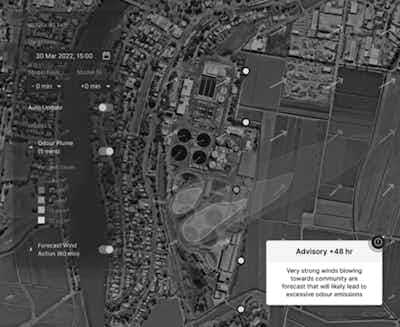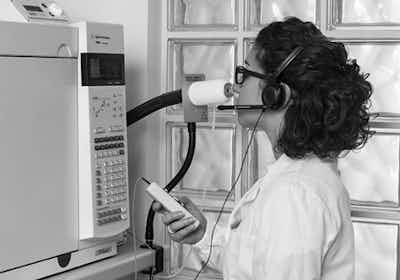Odours can be strong and unpleasant, and they can cause a range of problems, from environmental impact issues to personal discomfort. When it comes to managing odours in industrial settings, understanding odour thresholds is an essential part of the process.
We'll take a closer look at what odour thresholds are, how they're measured, and how technology is helping to manage them.
Why are odour thresholds important?
First off, let's define what we mean by the term odour threshold. Simply put, it refers to the lowest concentration of a given substance that can be detected by the human sense of smell. The threshold level can vary widely from one substance to another; some substances are so pungent that they can be detected in very small amounts, while others require a much higher concentration to be experienced. It's worth noting that odour thresholds can also vary from person to person, depending on factors like age, gender, and overall health.
How are odour thresholds measured?
To determine the odour threshold of a substance, scientists use a method called olfactometry. This involves presenting a series of dilutions of the substance to a panel of trained human sniffers. The panel members sniff each sample and indicate whether they can detect an odour, and if so, at what concentration. Through statistical analysis, the odour threshold is determined as the concentration at which 50% of the panel detected an odour.

An olfactometer is an instrument used to detect and measure odour dilution. Olfactometers are used in conjunction with human subjects in laboratory settings.
Managing odour thresholds with real-time odour monitoring technology
However, olfactometry is not the most efficient way to measure odours at industrial sites such as landfills and wastewater treatment plants. Results can be difficult to implement into operational odour management plans.
When it comes to managing odour thresholds in industrial settings, technology is playing an increasingly important role. There are a variety of tools and techniques that can be used to track and mitigate unpleasant odours, from odour sensors and real-time monitoring systems to drones equipped with gas sensors. For example, a water treatment plant might use gas sensors to detect the presence of hydrogen sulfide (H₂S), a gas that gives off a characteristic "rotten egg" smell and can be harmful to human health. By detecting the gas early and taking appropriate action, the plant can prevent odour complaints and potential health risks.
In addition to gas sensors, new technologies like sensors are being developed to help track and manage odours in real-time. These devices use a combination of sensors and environmental intelligence from hyperlocal weather forecasting algorithms to "smell" odours and identify their sources. The data collected by odour sensors can be used to pinpoint problem areas, adjust treatment processes, and make more informed decisions about odour management.
The City of Des Moines is taking a data-driven approach to detect ongoing odour issues in their metro area with an integrated odour sensor hardware solution to determine thresholds for acceptable odour in order to limit impact on their residents while gaining compliance from commercial industry partners in the Des Moines area.
Odour thresholds are an important factor to consider when it comes to managing odours in industrial settings. By understanding how odour thresholds are measured and using technology to monitor and mitigate unpleasant odours, it's possible to create a safer, more comfortable environment for workers and nearby residents.
As new technologies continue to emerge, the possibilities for odour management will only continue to expand. Whether you're a wastewater treatment plant operator, landfill manager, or other environmental professional, staying up-to-date on the latest odour management techniques can help you stay ahead of the curve and keep your operations running smoothly.

Technologies that combine sensor data with hyperlocal weather forecasts can be used to calculate odour at specific locations within your facility and outside the boundaries to understand your operational impact up to 72-hours in the future.
Talk to us today about proactive odour management
Odour is still a challenge for operators today despite a wide range of abatement options. It’s critical to know the precise time to engage odour control measures or how external factors like the weather might determine future impact.
Lack of knowledge of these areas can lead to impacts on nearby communities which creates costly investigations and disruptions from lawsuits and fines. This results in poor publicity for site operations in the media and a damaged reputation.
Get in touch with us today to solutions for proactive odour management can help your industrial operation:
Respond to community odour concerns and communicate transparently
Identify emission sources and reduce the cost of mitigation resources
Continuously improve odour management plans to enhance efficiency
